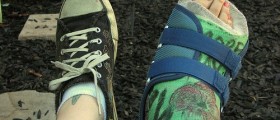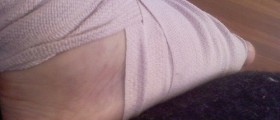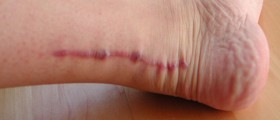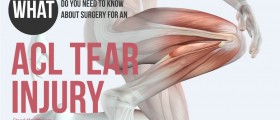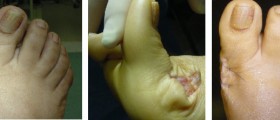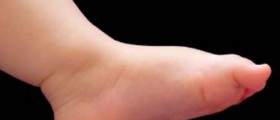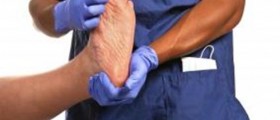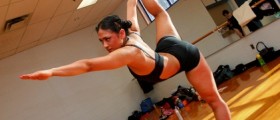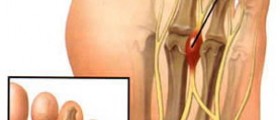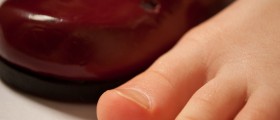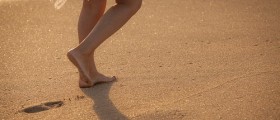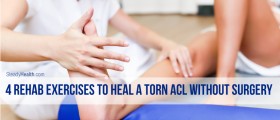Loading...
Loading...
Thanks for posting, this is the closest scenario I've found to my own. I was injured in August but put off treatment, then got a bad diagnosis, then finally got a walking boot end of October. A month of that with no change, and now its day 3 with a NWB cast that I'll have until Xmas or New Years. I am very interested in your decisions and what you've learned. How surprised was your doc that the pain was still there? Its really hard to have a sense of how likely this cast is to fix things up.
Loading...
Pete, I've got very similar situation, I even went backpacking a month after my injury, and before I was diagnosed. I've just got a cast put on for a month or more. My sense is that each injury is a bit unique so its hard to compare. However one item that seems consistent is that even in basic cases its about 4 months from injury/first treatment to a level of basic healing, and a year to return to previous strength/activity. Because of that, I'm mostly working on my patience. Years on, I feel like it works out pretty well for most everyone, even if they are not quite 100%. My father had lisfranc years ago....all he has to say its that it just takes a LONG time - longer probably than any other injury you've had.
Loading...
Pete, I've got very similar situation, I even went backpacking a month after my injury, and before I was diagnosed. I've just got a cast put on for a month or more. My sense is that each injury is a bit unique so its hard to compare. However one item that seems consistent is that even in basic cases its about 4 months from injury/first treatment to a level of basic healing, and a year to return to previous strength/activity. Because of that, I'm mostly working on my patience. Years on, I feel like it works out pretty well for most everyone, even if they are not quite 100%. My father had lisfranc years ago....all he has to say is that it just takes a LONG time - longer probably than any other injury we've had.
Loading...
The part that would scare me is to spend another 2-3 months "recovering" in the boot just to find out i'll need surgery after all. If surgery is the case, I want to start that process immediately to shorten this never ending down time, but then I don't want surgery unless I need it as my foot will never be the same (fusion).
The pain did surprise the doctor and the way she put it is that had this been immobile from the get go it would have probably healed fine as that was when my body was aggressively treating it on it's own. This long after, my body doesn't think there's anything wrong so it's just kind of settled or is veeery slooooowly healing it.
I'll be very curious as to how you feel when you start weight bearing in the boot. Also how did yours feel after a month of walking on it before the diagnosis? What part of weight bearing hurt? For me it was walking on the inner foot (using big toe). Shifting weight toward the pinky toe and outter foot felt alright. I was able to go about daily life except for the activities.
Loading...
CT scan (1.5 month later) showed fragments at the base of the 2nd metatarsal.
MRI (2 months later) showed no anomalies.
Loading...
Loading...
To answer your question, there was actually pain across the mid-foot and it felt more like something was unsound rather than just soreness or tenderness from lack of usage. That's the part that was worrying. Surprisingly it's getting better with each day though as I continue to put weight on it (in the boot of course). We will see how it does with therapy, time and once I remove the boot.
In my case, I'll definitely be doing an aggressive therapy schedule as my goal is not only to walk pain free but to get back to my pre injury level of running 40-50 miles a week and climbing mountains. Thats why the surgery vs. non-surgery debate is so difficult. Non surgery has the upside of returning to 100% but the downside of waiting and waiting and possibly never healing, resulting in surgery down the line anyways. Immediate surgery on the other hand has the upside of at least being certain everything is correct and back to normal in around 4-5 months, with the downside of a forever 90% foot due to fusion.
The stories are so all over the board as to people's long term experiences with these injuries. Stoked we have this community here!
Loading...
Before the diagnosis, it seemed to be getting slowly better so I was "walking" on it daily, but would feel sharp stabbing pain right when my heel came off the ground during normal stride, at the lisfranc joint, at the 1st metatarsal.
I couldn't walk on the outside of my foot either. (turned out I have several other issues including a cuboid nut-cracker style fracture)
My walking adjustment was to rotate toes out and swing the foot sideways, or go very slowly and lift the foot straight up. Neither were long term options and my healing had slowed, so I went to a doc.
First doc thought a nerve issue, and I got 2 cortisone shots over a few weeks - but with no progress I got a 2nd opinion, an MRI, and finally learned it was a stable lisfranc with no displacement. Was in a weight bearing boot for a month with no benefit.
Just getting a cast now at 3 months from injury, seems hard to predict how much healing will occur.
I'm also looking to get back to surfing and climbing mountains, not just walking. Your other post nails the tradeoff perfectly between surgery/long-term PT, a choice I'm hoping I won't have to make in 6 weeks.
Thanks and please continue posting about your progress! Maybe consider pool walking sessions to transition into weight bearing?
I found that in this PT info for NFL players with lisfranc, a bit dated, but maybe helpful to see the rehab program for someone with the best care.
Note to self: consider waiting on cortisone shots until an MRI, if you have soft tissue damage it can inhibit healing and/or block MRI readings.
***this post is edited by moderator *** *** web addresses not allowed*** Please read our Terms of Use
Loading...
Loading...
Hi Jeanette! I'm doing alright. Alittle less sensitivity but if I keep it down too much the swelling is worse so I try to get on my mat periodically and stick my foot in the air and stretch. That makes a difference. The red light seemed too much heat for now, but soaking in Epsom salt and then putting ice seems to be good. Sometimes I put the boot on the floor and press down alittle and that seems o.k. but I think I'm going to be very conservative like I said earlier. I'm in the waiting phase. I think that guy is right, this injury is just a long, long recovery. I think I told you I called the prolotherapy place and they said to let the foot heal more on its own first. Trying to stay entertained . . . . . haha. Happy Tofu day!
Loading...
I broke my third metatarsal in the middle of March while visiting relatives. ER doctor recommended surgery ASAP. Came home and team of doctors in Sports Medicine suggested no surgery, air boot for 6 weeks and bearing weight as soon as possible. In the ER they mentioned possible previous lisfranc injury and everyone that sees the X-rays mentions that. Never recall a previous foot injury and didn't really know what that meant! I work in retail so I hobbled around on crutches for 6 weeks, then dr suggested that I loose the crutches and do more weight bearing. After 8 weeks started PT. Everyone that looked at it there said they had never seen a foot so swollen. Assumed it was because I was on my feet so much. After 6 mos my orthopedic told me to have a good life. Now it has been 8 moths & I am still having a hard time finding a shoe I can put on. And I live in VT. I was recently referred to a pediotrist for the hammer toe due the injury & wearing the boot for so long. He told me he thought I had a lot worse injury than anyone realized and possible ligament damage. "Find an extra wide lace p shoe and have a good life". I am 60 yrs old and have always been an avid skier, but I can't image being able to put my boot on. No clue, what, if anything, I can do now. Coming into 9 months.
Loading...



